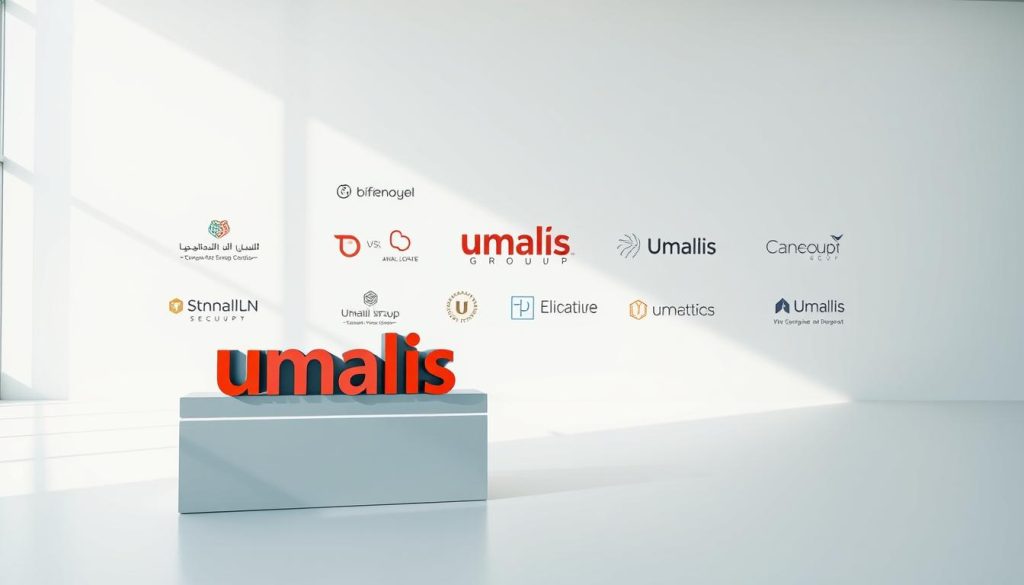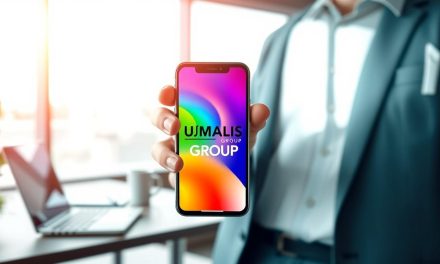Remember the last time you recommended a service to a colleague? Chances are, you suggested someone whose name immediately came to mind. Now imagine being that go-to expert in your field – the professional others trust without hesitation. That’s the power of strategic visibility.
As independent professionals, we often focus on perfecting our craft while assuming our work speaks for itself. But here’s the truth: exceptional skills alone don’t guarantee consistent opportunities. What separates thriving careers from unstable ones is how memorable and trustworthy you appear to decision-makers.
Think of your professional identity as a lighthouse in a crowded harbor. Without clear signals guiding clients to your unique value, even the most skilled practitioners risk being overlooked. This isn’t about flashy marketing – it’s about creating lasting recognition that opens doors to premium projects and partnerships.
Table of Contents
Key Takeaways
- Strategic visibility acts as career insurance against market changes
- Memorable professional identities attract premium opportunities
- Consistent recognition builds client trust faster than cold outreach
- Strong industry presence creates referral networks that work for you
- Clear messaging helps clients understand your unique value quickly
- Ongoing visibility efforts compound over time for lasting impact
We’ll explore practical methods to transform your expertise into a recognizable professional signature. These approaches help you stand out authentically while building the foundation for steady income streams and industry authority.
Understanding Brand Awareness
When clients face a problem in your industry, who’s the first expert they think to call? This mental shortcut determines who gets hired – and who gets forgotten. Professional recognition acts as your career compass, guiding opportunities toward you even when you’re not actively seeking them.
The Recognition Spectrum
Visibility operates on three levels:
- Name familiarity: « I’ve heard of their work »
- Expertise association: « They solve X-type problems »
- Trusted authority: « My first call when issues arise »
Modern professionals face a paradox: more communication channels exist than ever, yet cutting through the noise requires sharper strategy. Consider how recognition-building has changed:
| Era | Primary Strategy | Key Tools |
|---|---|---|
| 1990s | Local networking | Print ads, trade shows |
| 2010s | Social media presence | LinkedIn, blogs |
| 2020s | Value-driven content | Webinars, case studies |
From Billboards to Algorithms
Early career builders relied on physical visibility – storefronts, newspaper ads, and business cards. Today’s digital landscape allows specialists to showcase expertise globally while targeting specific client needs. This shift empowers independent professionals to compete with large firms through strategic content sharing and niche positioning.
The right recognition strategy acts as both shield and spear: protecting against market fluctuations while actively attracting ideal clients. Your next section will reveal how to convert this visibility into tangible career security.
The Importance of Brand Awareness in Today’s Competitive Market
Imagine standing in a crowded marketplace where every vendor offers similar expertise. Clients face decision fatigue daily, making familiarity their shortcut to confident choices. Red C research confirms this: 82% of buyers gravitate toward names they recognize when making purchase decisions.
Professionals with established visibility enjoy three critical advantages:
- 28% shorter sales cycles due to pre-existing trust
- 47% higher client retention during economic shifts
- 5x more referrals from satisfied customers
Consider how decision-makers evaluate options:
| Visibility Level | Client Perception | Business Impact |
|---|---|---|
| Low | « Another option among many » | Lengthy negotiations |
| Moderate | « Recognized name in the field » | Faster onboarding |
| High | « Preferred solution provider » | Premium pricing power |
Modern marketing demands strategic positioning. Clients conduct 6-8 touchpoints before contacting professionals, according to industry data. Those who consistently appear in relevant searches and conversations become automatic contenders for high-value projects.
Building this recognition isn’t about vanity metrics. It’s creating mental shortcuts that position you as the logical choice. When clients face urgent needs, they’ll bypass lengthy evaluations for experts they already know can deliver results.
Establishing a Consistent Brand Identity

Can clients recognize your work without seeing your name attached to it? That instant recognition separates memorable professionals from interchangeable vendors. A cohesive identity acts as your visual handshake – conveying expertise before you speak.
Your professional image needs more than matching colors. It requires strategic alignment between what you show and what you deliver. Decision-makers subconsciously assess competence through:
- Design consistency across proposals and social profiles
- Tone of voice that matches your specialization
- Visual cues signaling your niche expertise
We help craft identities that grow with your career. One client increased project inquiries by 40% after streamlining their brand identity across eight touchpoints. Their signature color scheme now triggers instant recall in their target market.
Create documentation outlining fonts, image styles, and messaging frameworks. This ensures every client interaction reinforces your reputation. Independent professionals using branding strategy guidelines report 35% faster client onboarding.
Your visual toolkit should answer critical questions quickly. Can viewers tell you’re a cybersecurity specialist versus a marketing consultant? Do your materials whisper « freelancer » or shout « industry leader »? Consistent execution builds the familiarity that converts lookalikes into preferred partners.
Remember: Recognition isn’t about being flashy. It’s about being unmistakable. When your identity works harder, you can focus on delivering exceptional results that keep clients coming back.
Creating a Robust Brand Awareness Strategy
Strategic visibility isn’t about being everywhere—it’s about being unforgettable where it matters. Professionals who master this balance transform casual observers into loyal clients. Your roadmap should focus on precise alignment between your expertise and client needs.
We craft visibility plans that position you as the first-choice expert. Our approach combines three elements:
- Targeted presence: Identify where decision-makers seek solutions
- Value demonstration: Showcase expertise through real-world examples
- Consistent reinforcement: Maintain visibility during client research phases
Effective plans adapt to your niche’s unique rhythms. A cybersecurity consultant needs different tactics than a marketing specialist. We analyze client journeys to plant recognition at critical decision points—before needs become urgent.
Blend digital tools with personal outreach for maximum impact. While 68% of professionals start their search online, final decisions often hinge on trusted recommendations. Our brand consolidation strategies bridge this gap through measurable campaigns.
Track progress with these key indicators:
| Metric | Short-Term Focus | Long-Term Impact |
|---|---|---|
| Search visibility | Keyword rankings | Organic traffic growth |
| Engagement | Content interactions | Referral rates |
| Conversion | Lead generation | Client retention |
Adjust tactics quarterly using performance data. This ensures your efforts evolve with market changes while building lasting recognition. The right strategy becomes your career accelerator—turning visibility into credibility and opportunities into stability.
Leveraging Social Media for Increased Awareness

Your next client could be scrolling through their feed right now. With over two billion Instagram users alone, social platforms offer unmatched reach for professionals ready to stand out. The key lies in strategic engagement – transforming casual viewers into loyal advocates.
Optimizing Your Social Profiles
Treat every profile like a dynamic portfolio. Use professional headshots and bios that clearly state your specialty. One consultant increased inquiries by 30% after adding « Cybersecurity Architect » to their LinkedIn headline instead of generic « IT Professional ».
Focus on platforms where your target audience spends time. A tax strategist might prioritize LinkedIn discussions, while a designer could showcase work on Instagram. Track where clients mention finding you to double down on effective channels.
Engaging Content Tactics
Share insights that solve common problems without sales pitches. Post case studies showing measurable results, or quick tips addressing industry pain points. A financial planner gained 200 qualified followers monthly by explaining retirement planning myths in 90-second videos.
Encourage organic sharing by creating save-worthy content. Checklists, templates, and comparison guides get 3x more shares than promotional posts. Pair evergreen resources with timely commentary on industry trends to stay relevant.
Consistency matters more than frequency. Schedule 2-3 weekly posts demonstrating expertise, alternating between educational content and client success stories. This balance builds trust while naturally expanding your reach to new audiences.
Building a Memorable Brand Image Through Visuals

Visuals act as mental bookmarks in a fast-paced digital world. Consistent design elements help professionals cut through the noise, creating instant recognition that outlasts fleeting interactions. A study by MIT neuroscientists reveals the human brain processes images 60,000 times faster than text—making visual identity your silent ambassador.
Your visual toolkit should work like a fingerprint—uniquely identifiable across all platforms. We help craft cohesive color palettes and typography that mirror your expertise. One cybersecurity specialist saw 33% faster client responses after standardizing their proposal templates with industry-specific visual cues.
Effective design balances professionalism with personality. While corporate blue conveys trust, vibrant accents can highlight innovative approaches. Consider how these elements impact perception:
- Font styles suggesting precision vs creativity
- Color combinations that align with niche expectations
- Layout patterns enhancing content clarity
Cross-platform consistency builds credibility through repetition. Professionals maintaining uniform visuals across LinkedIn, websites, and pitch decks report 28% higher recall rates. This strategic repetition turns casual viewers into familiar contacts before your first meeting.
Your marketing efforts gain momentum when visuals reinforce messaging. Shareable infographics and branded templates extend your reach organically. We optimize assets for different mediums—ensuring crisp rendering on mobile screens and professional print materials alike.
Lasting visual identities grow with your career while maintaining core recognition elements. Regular audits keep your imagery current without losing established familiarity. This approach transforms fleeting impressions into enduring professional relationships built on instant recognition.
Measuring Brand Awareness Effectiveness
How do you track what people remember about your services? Quantifying professional visibility requires moving beyond likes and shares to meaningful indicators. Think of it as mapping mental footprints – tracing how decision-makers encounter and recall your expertise.
Essential Tracking Methods
Effective measurement combines numbers with narratives. Start by monitoring website traffic sources – direct visits often signal existing recognition. Tools like Google Analytics reveal patterns, while platforms like BuzzSumo track social mentions across networks.
Pair this data with client surveys asking specific questions:
- « Where did you first hear about our services? »
- « What specialty would you associate with our work? »
- « Would you recommend us to colleagues? Why? »
| Metric | Measurement Tool | Business Impact |
|---|---|---|
| Direct Traffic | Google Analytics | Recognition Strength |
| Social Mentions | Brand24 | Industry Influence |
| Referral Rates | CRM Systems | Client Trust Levels |
| Media Citations | Mention | Authority Positioning |
Professionals using these methods often discover surprising insights. One consultant found 40% of new clients came from podcast appearances they considered « secondary activities. » This data helped reallocate their marketing efforts toward high-impact channels.
Establish quarterly checkpoints to review progress. Compare baseline measurements against current performance, focusing on indicators that predict client acquisition. Over time, these patterns reveal which strategies build lasting recognition versus temporary visibility.
Remember: What gets measured gets managed. By tracking the right signals, you transform abstract concepts into actionable insights that drive career growth.
Integrating Content Marketing with SEO
What if your expertise could find clients before they even reach out? Search engine optimization transforms your knowledge into discoverable solutions. When strategic content meets technical SEO, your insights become magnets for decision-makers actively seeking help.
Consider this: the top Google result captures 33% of all search traffic. We focus on aligning your specialized knowledge with phrases clients use daily. A cybersecurity advisor might optimize for « data breach prevention strategies, » while a marketing consultant targets « campaign ROI improvement. »
Effective integration means creating resources that answer real questions while climbing search rankings. Case studies analyzing industry challenges or guides explaining complex processes work double duty. These assets demonstrate competence while improving visibility.
Every article or video becomes a long-term ally. Optimized content keeps generating leads years after publication, unlike temporary ads. One consultant secured 12 new projects last quarter from a single evergreen guide published in 2021.
Our approach ensures your materials balance value delivery with technical precision. We help structure content for both human readers and search algorithms. This dual focus builds authority while expanding your reach to qualified prospects.
True career security comes from becoming the obvious answer when clients search. By merging quality content with SEO best practices, you create lasting visibility that drives opportunities—even during market shifts.
FAQ
How can independent professionals start improving their market visibility?
Begin by defining your unique value proposition and aligning it with your target audience’s needs. Use platforms like LinkedIn to showcase expertise through thought leadership articles, case studies, and client testimonials. Consistency in messaging across all channels reinforces credibility.
Why is social media critical for expanding professional reach?
Platforms like Instagram and Twitter allow direct engagement with niche audiences. For example, sharing actionable tips in short videos or carousel posts can position you as an authority. Tools like Hootsuite help track engagement rates and optimize posting schedules for maximum impact.
What metrics matter most when evaluating visibility efforts?
Focus on website traffic sources (Google Analytics), social media engagement rates, and search ranking improvements (SEMrush). Surveys asking clients how they discovered your services also provide qualitative insights into recognition growth.
How does content marketing integrate with SEO to boost discoverability?
Keyword-optimized blog posts or videos addressing client pain points improve organic search rankings. For instance, a freelance accountant might create guides on tax-saving strategies using terms like “independent contractor deductions,” attracting targeted traffic through Google searches.
Can visual elements like logos really impact client trust?
Yes. A cohesive visual identity—consistent fonts, colors, and imagery—builds memorability. Dropbox’s minimalist design, for example, reinforces its reputation as a streamlined solution. Use Canva to maintain uniformity across business cards, proposals, and social profiles.
What’s the fastest way to recover from a damaged reputation?
Address issues transparently through direct communication and public statements. Rebuilding trust often involves overdelivering on revised promises. Buffer’s open response to a 2013 data breach, followed by enhanced security measures, restored user confidence within months.





